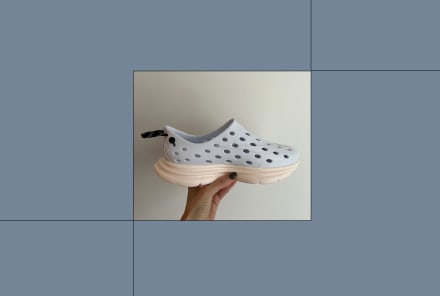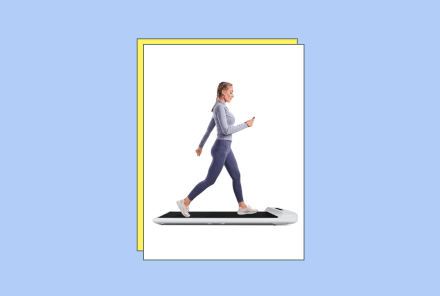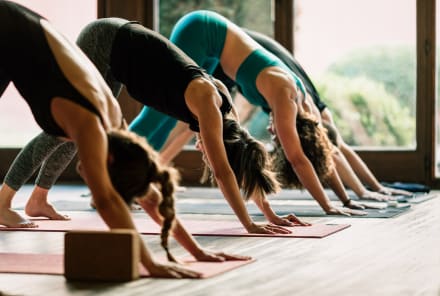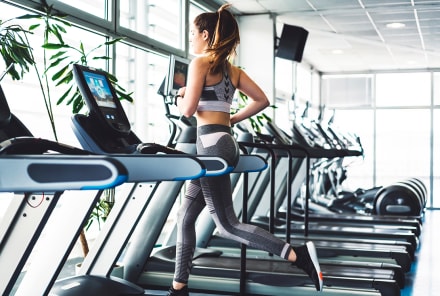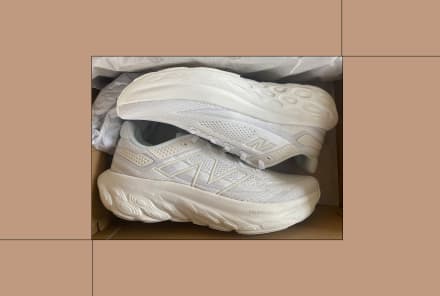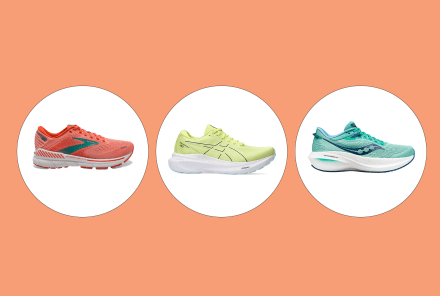Advertisement
The Best Posture & Movement Tips For Folks Who Sit All Day — From Folks Who Used To Sit All Day

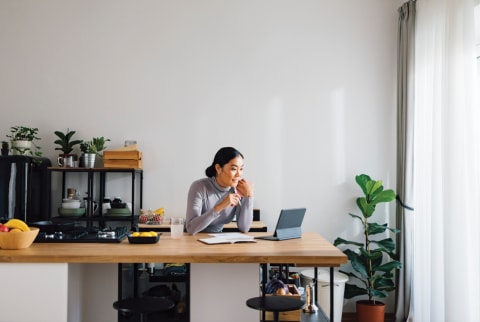
Like many folks with an office job that involves most of my day in front of a screen, I sit a lot. I know I'm not the only one, as surveys indicate that Americans sit for upward of 9.5 hours a day1—an absolutely startling number of hours that I find myself unfortunately relating to.
Recently, occupational therapist and health writer Lis Bahr, OTD, M.S., wrote a story for us about how sitting impacts back pain and small ways to keep moving throughout the day.
"At this point, you've likely come across the phrase 'sitting is the new smoking'—and there's some truth to it," she wrote in the article. "The CDC2 reports that living a sedentary lifestyle (as 28% of adults over 50 do3) increases one's risk of chronic conditions such as heart disease, cancer, and Type 2 diabetes. In contrast, those who sit less report fewer chronic diseases, better mood and sleep quality, and enhanced daily functioning."
I found it very helpful and shared it in a recent send of mindbodygreen's thrice-weekly newsletter The Long Game (sign up for the The Long Game here so you can stay up to date on all the latest longevity and health information.) In return, we got several responses from readers about what they do to help offset the negative effects associated with prolonged sitting.
I loved them so much that I thought I'd share them here—so you, too, can feel inspired to get moving.
Set a timer & create a routine
The best way to stick to a good habit is consistency: "My favorite posture tip is to set the timer on my phone for 1 hour and when it goes off, stand up for 2 minutes and perform the following head-to-toe routine for 5 repetitions each," wrote physical therapist and certified personal trainer Erin E Hughes, P.T., LMT, NSCA-CPT.
Here, she shared her moves:
- Head rotations (look over each shoulder)
- Shoulder rolls
- Scapular squeezes
- Spine extenders (lean back with hands on hips)
- Marching in place
- Mini squats
- Heel raises (lifting up on the toes)
Set rules about sitting time
A few readers noted that they've crafted "rules" for themselves about standing time versus sitting time that flows with their work schedule. For example, "I have a standing desk and only sit when I'm on a Teams meeting," wrote reader Monica T.
Licensed psychologist Maria Lauralynn Noblejas, Ph.D., noted she's also a fan of using her standing desk—which she utilizes between clients: "I bought a standing desk! I am a psychologist and I see 8-9 clients back to back Monday through Friday. At least for about 3-5 minutes between each client's session I am standing," she wrote in.
Another reader, Ellen G. Goldman, M.Ed., notes she finds her standing time between clients: "I always leave a minimum of a 15-minute break in between client appointments. I'll use a few of those minutes to stand, stretch, get some water, or walk up and down the stairs (I work from a home office). Often I wear wireless headphones so that I can walk around while talking with clients. If it's a desk day, I set my timer for 55 minutes of focus time. When it goes off, I use the five minutes to get up and stretch."
Use a tech & tools to keep you motivated
Several mbg staffers have become huge fans of walking pads—including commerce editor Carliegh Ferrante, who wrote about her favorite option here.
One reader said she got herself a walking pad to amp up her movement time—as well as a smartwatch: "I wear an Apple Watch and it has what it calls a 'stand' goal. But it turns out that with my watch, I often have to move for much longer than a minute to get credit for each 'stand' hour. So I set an alarm to go off at 5 minutes before each hour to remind me to get up and move. I often do this by jumping on my walking pad, which I bought because you recommended it," Polly C. wrote.
Set a steps goal & stick to it
It's up for debate about exactly how many steps you need to hit each day to get the associated health benefits. At mbg we mostly aim for the 7K threshold, but many staffers set theirs a bit higher (including 10K and 20K!).
Personally, I hit my daily step goal (I aim for 7-10K a day) by building walking into my commute to the office, events, and whenever I leave the house. I often opt to walk places over public transit or taxis, even though it takes longer. I build it into my schedule and just leave the house earlier than I would otherwise!
Engage in micromovements
Even if you're seatbound, movement is possible.
"Small movements in your chair can be helpful if regular breaks aren't possible," writes Bahr in the original article. "If you're feeling fatigued or have limitations in mobility, chair press-ups can help to relieve pressure and soreness. Grasp the sides of the seat, then extend the arms to lift your bottom from the chair slowly. With your feet resting on the floor, you should only hold this position for a few seconds. A short chair yoga routine can also work wonders for stiffness."
Follow along:
If you're someone who likes to stay up to date with the latest health trends, longevity research, beauty tips, and more—sign up for our newsletter, The Long Game. It's a thrice-weekly newsletter that's chock-full of info about how to stay your healthiest for the long term (ahem, game).
Watch Next
Enjoy some of our favorite clips from classes
Enjoy some of our favorite clips from classes
What Is Meditation?
Mindfulness/Spirituality | Light Watkins
Box Breathing
Mindfulness/Spirituality | Gwen Dittmar
What Breathwork Can Address
Mindfulness/Spirituality | Gwen Dittmar
The 8 Limbs of Yoga - What is Asana?
Yoga | Caley Alyssa
Two Standing Postures to Open Up Tight Hips
Yoga | Caley Alyssa
How Plants Can Optimize Athletic Performance
Nutrition | Rich Roll
What to Eat Before a Workout
Nutrition | Rich Roll
How Ayurveda Helps Us Navigate Modern Life
Nutrition | Sahara Rose
Messages About Love & Relationships
Love & Relationships | Esther Perel
Love Languages
Love & Relationships | Esther Perel



